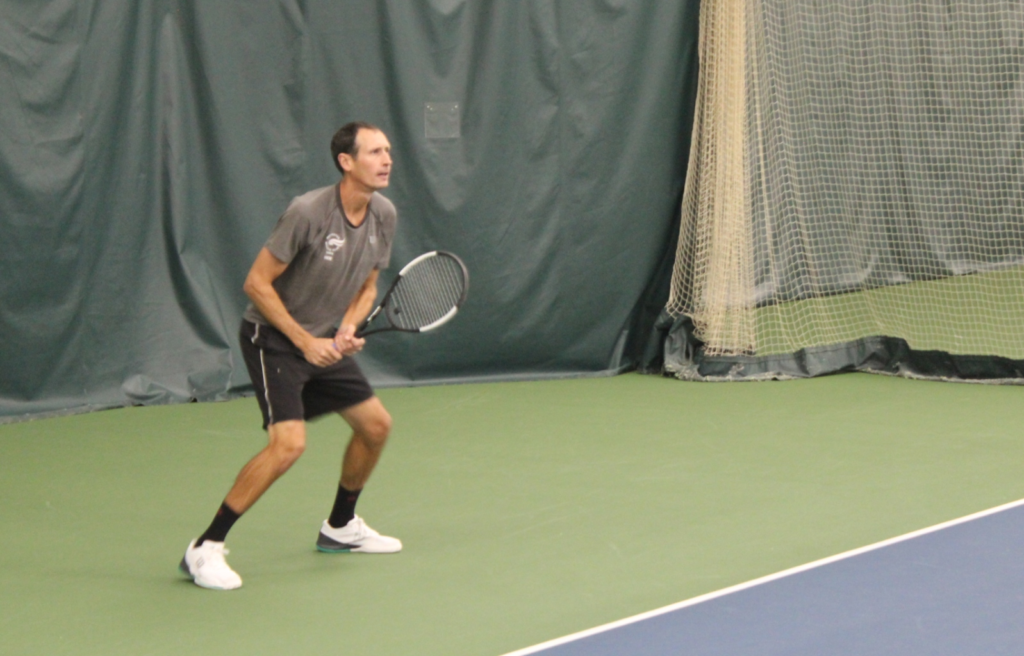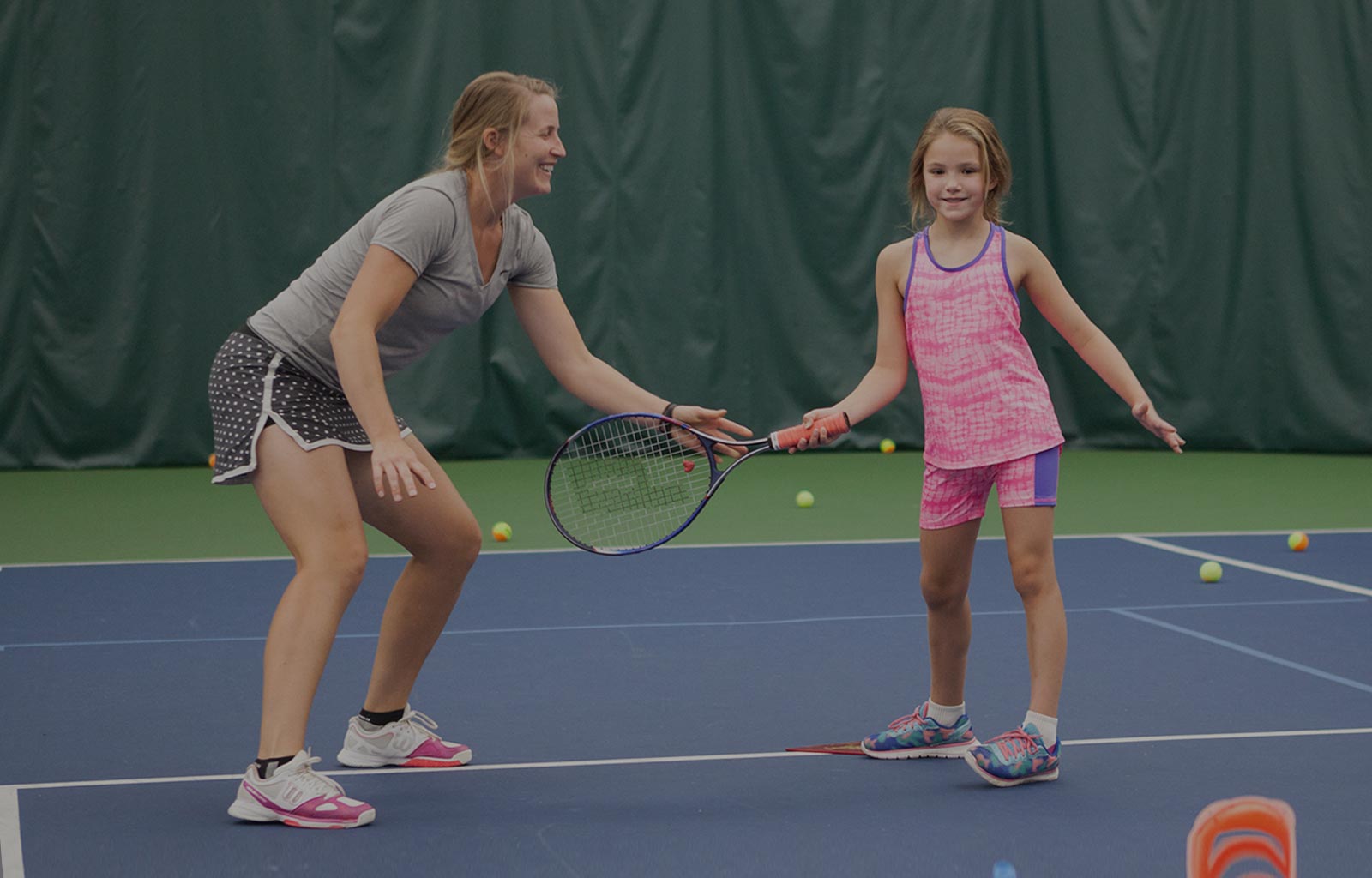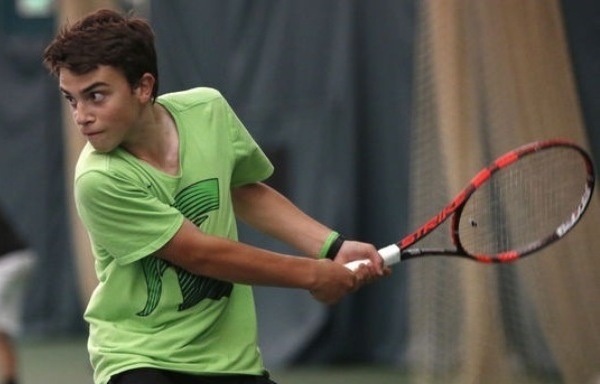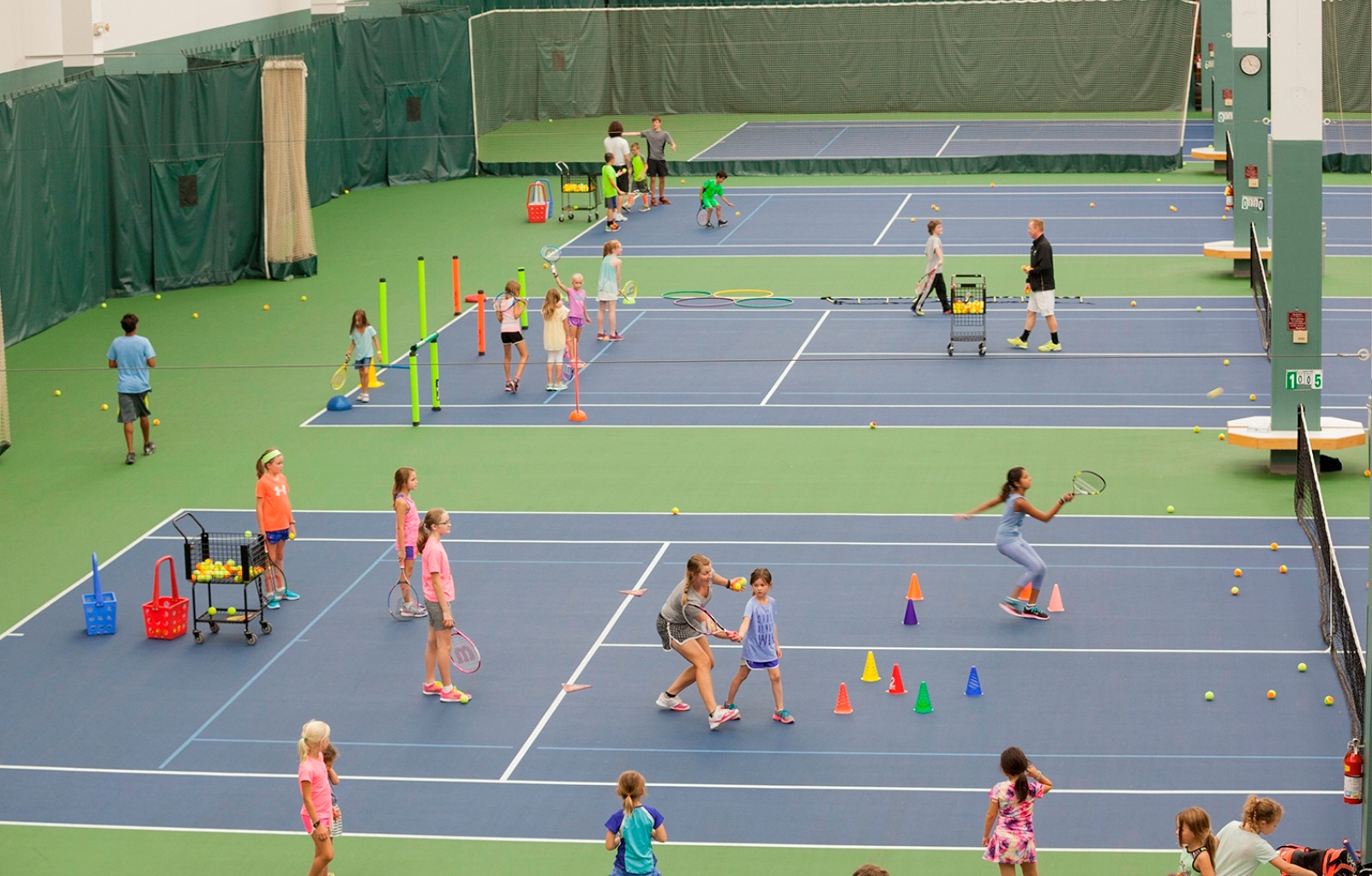When watching a professional tennis match, the players move to the ball with such ease and flow. One of my students returned from watching the Cincinnati Open and commented on how Roger Federer looked “lazy’’ when he played. What my student was describing was how Federer moved in a relaxed, connected manner without wasting a lot of energy.
How can we, become relaxed and efficient with our movement on court, while maintaining intensity and accuracy?
The solution lies in early preparation and anticipation. One of the main ingredients to successful match play is always being able to maintain the proper contact point. Timing is key – but how do we consistently get into a good position in time? The answer is the split step.
The split step is the “step-hop” movement that players make before moving to and hitting the tennis ball. It allows one to get into the ready position and initiates the movement to the ball. Without a well-timed split step, a player is limiting his movement potential, regardless of his/her natural athleticism, speed, power, or ball reading skills.
Here are some important concepts and ideas to become familiar with concerning the split step:
The split step consists of five distinct stages:
- Recovering from the previous shot
- Loading and preparing to hop
- Hopping and reading the opponent’s cues while in the air
- Landing low in an athletic stance in anticipation of movement to the ball (head and eyes stay still)
- Explosively moving towards the ball
These five stages link together a player’s movements while he reads the situation and makes a decision.
The timing of the split step is important.
The split should be initiated when your opponent begins accelerating the racquet head towards the ball (before impact). The peak of the jump should be at point of contact, giving you time in the air to read your opponent’s cues and decide in which direction you will move upon landing.
When the decision making is early, you can complete what is known as a “flow-split”.
This is where the initial ground contact is loaded on the exterior/offside foot and the lead foot is already turning towards the ball. On landing, the knees are already bent and loaded like springs, allowing for an explosive first step.
The height of the split step tends to vary based on court position.
When returning from the backcourt, the hop tends to be a bit higher. When approaching, a lower/wider stance jump is often preferred.
What are some common errors to avoid?
Common errors include jumping too late and moving too far into the court before splitting. Usually it is beneficial to split early with the ball farther in front of you, allowing for more decision-making time.
How can I work on my split step?
Footwork is often neglected in practice, though it tends to be what separates an exceptional player from a pretty good player. Several ideas for improving your split step include:
- Jumping Rope – Every tennis player should have a jump rope in their tennis bag. Regular practice helps create soft feet and a consistent quick push off the ground.
- Split Hops – Think hopscotch. Jump onto left foot, then both feet, then right foot, then both feet, then left foot…the landings should be light and nimble. Envision a boxer’s footwork.
- Split/Catch Drill (requires a partner) – Player jumps and partner tosses ball at the same time, forcing the player to decide in the air which direction to move upon landing in order to catch the ball.
- Squats – Strength and good knee-over-foot form can be practiced simultaneously.
- Quickness Drill – Line up cones about 2 steps apart. Sprint forward two cones, and back pedal/hop back one cone into a split step. Explode out of split step and move forward 2 cones. Repeat.
But I’m really fast! I don’t need to split step!
You may be fast. However, without an effective split step, you will be slower than your potential! You will also have decreased control of your momentum, often resulting in getting too close or too far from the ball.




